Weather:
- Ha Noi 21oC
- Da Nang 20oC
- Ho Chi Minh 28oC
By Lê Hương *
In the heart of Hà Nội, President Hồ Chí Minh Relic Site is considered a very special place and a cultural heritage for all people.
Each tree, pond, and building over this 14.5 ha complex can tell its own story of the Hero of National Liberation and the Great Man of Culture in Việt Nam - President Hồ Chí Minh. He lived and worked here in his last 15 years between 1954 and 1969.
Trần Viết Hoàn is 82 this year. He worked very closely with Uncle Hồ in the leader's last three years. After President Hồ's death, Hoàn was among the people assigned to take care of this relic site.
"I’ve worked for 42 years and spent 38 years here," Hoàn said. "I felt that he always thought of the people in his daily life. All his life was spent on other people’s happiness. He always told us that the rice we eat, the shirts we wear, and the utensils we use are made by people. We have to compensate properly for them. We have to work hard, save a lot, and be honest."
After he passed away on September 2, 1969, the relic site was established. Many generations of staff and labourers have taken care of the landscape, buildings, and even the utensils there.
According to Nguyễn Thị Hà, Deputy Head of the Relic Environment Preservation Department, at the relic site, they work in teams. They start working at 4.30am-5am every day, cleaning the yards and gardens. Then they move to caring for the trees and plants there.
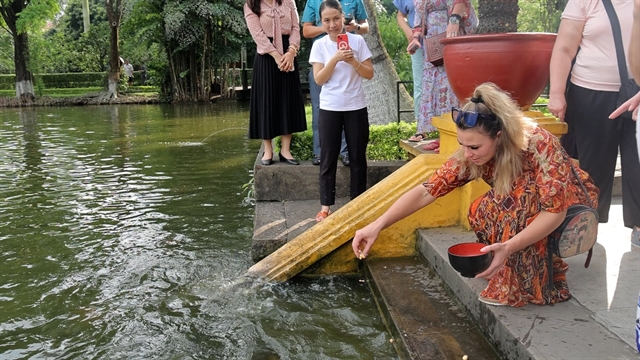
"We work outside so we are affected by weather conditions," she said. "When it rains heavily or there are storms, we find it difficult. On rainy days, the area of the house on stilts and the fish pond is the lowest part of the whole area. Water runs down there. We have a system of pumps to drain the water. In heavy rain, this road of mango trees will be flooded. We have to try our best to drain the water out and then clean the roads before visitors come. There are many big trees here. A lot of tree branches fall on such days."
There are several historical buildings here including House number 54 where President Hồ lived between 1954 and 1958. This was originally the house of an electrician with simple architecture and furniture.
Hoàn recalled: "When the revolution against the French was successful, the Party and Government invited Uncle Ho to move from Việt Bắc Resistance Base to stay at the house of the Governor-General of French Indochina, but he said, 'The house belongs to the people, not me'. So he did not stay there. Instead, he stayed at the house of the former electrician who served the Governor in a garden corner."
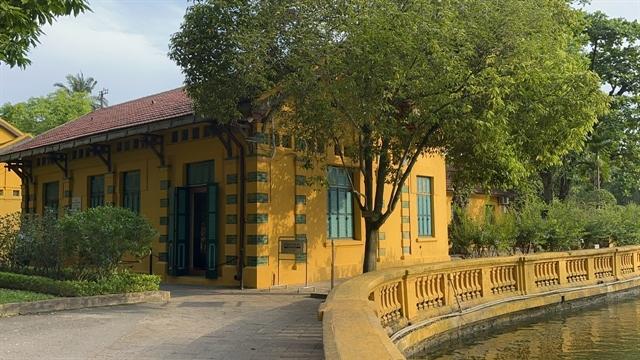
A house on stilts, a highlight at the site, is where the President lived and worked from 1958 to 1969.
He always wanted to live in a house on stilts next to a garden and fish pond like the houses of the Việt Bắc ethnic people.
"His house on stilts was not decorated with red lacquer or gilded with gold," Hoàn said. "He had no jewellery. His house on stilts has only some rooms. At that time, his soul was filled with the winds of that time while the small house was always full of natural light, breezes, and scents of flowers. His life was so simple, elegant and noble. His house on stilts has become a legend. The whole area where he lived and worked has become a really valuable museum that Uncle Hồ left."
Near the house on stilts, House number 67 was made for President Hồ during the time the Americans bombed the north. The house was designed with specially thick ceilings and walls so that it could protect him from bombs. The President moved to the house on July 20, 1967 and stayed there until he passed away.
Hoàn directly guarded Uncle Hồ during the time he was under medical treatment.
He recalled: "At 4pm on August 12, 1969, Uncle Hồ went to the Central Guest House on the West Lake to meet Lê Đức Thọ from the Paris Conference. That night he got a fever. He coughed. The next days, he coughed more and got a higher fever. He still went to and from the house on stilts to work."
On August 17, 1969, according to the doctors’ suggestions, Uncle Hồ left the house on stilts and stayed in House No 67.
During these days, it rained heavily. Hồng (Red) River’s level was very high. The Central Party invited him to the Safe Revolution Zone in Thái Nguyên Province. Uncle Hồ said: “I can’t leave the people. Please care for them as you care for me.”
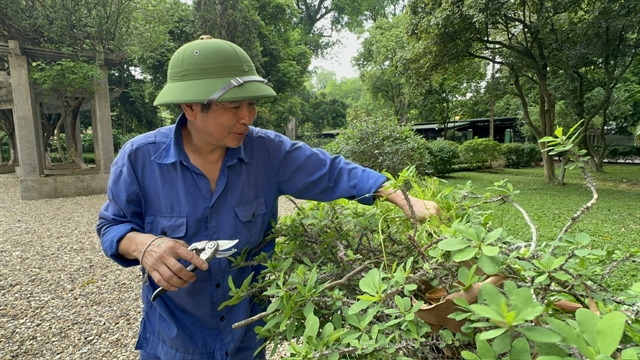
"When he was being treated, when he was awake, he asked people around about the State’s problems," Hoàn said. "We found him to be prepared for his passing away. For example, in the afternoon of August 29, he asked Prime Minister Phạm Văn Đồng and others standing around him: 'What day is today? It’s nearly Independence Day. This year’s ceremony I will just attend for some 10 —15 minutes.'"
Hoàn said he thought it over and found it so strange. At 9am, September 2, 1969, he suffered from a serious heart attack. Doctors tried to cure him. At 9:15pm, his heart stopped beating. He was right: he would join the ceremony for 10-15 minutes. Doctors and some of the staff there took turns to press on his chess by their hands hoping his heart would beat again. At 9.47am, PM Phạm Văn Đồng stood up, his eyes filled with tears. He said: "Comrades, please stop, our Uncle Hồ cannot recover.”
The relic site receives over three million visitors each year, which requires great efforts by the management staff.
Nguyễn Văn Dương, Deputy Director of the relic site, said besides buildings and objects, they had to care for the surrounding landscape and environment. That’s why preserving is so challenging.
"For example, the house on stilts is directly exposed to nature," he said. "We cannot apply much science and technology to preserve it. We cannot install glass, air conditioners, or any dehumidifiers, which hinders our preservation a lot."
Dương added that the site is open to the public 365 days each year, without any days off.
"To balance family and office work, our staff have spared no effort," he said. "With sincere hearts for the President, enthusiasm, and responsibility, we have tried our best to preserve this relic site to make it last long together with time."
Dương said they were happy to welcome many visitors here, which resulted in certain difficulties.
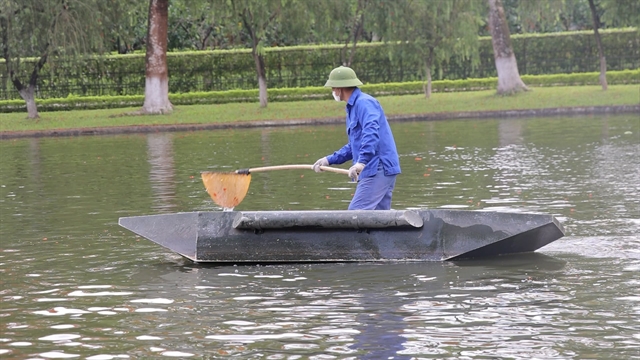
"For example, the way to the house on stilts is narrow, visitors often touch their hands on the pillars of the house," he said.
The relic site always leaves a strong impression on international friends about the great man of the nation.
"President Hồ is the national father of Việt Nam, and the founder of the Vietnam Socialist Republic," said Ning-Yuan Ernest Wang, a visitor from Chinese Taipei.
"Honestly, I’m in the middle of the tour, I haven’t exactly finished it. But I may get to see, I guess, the house he lived in, the environment he used to live in for a couple of years. I saw some cars from France and the Soviet Union that used to take him around," he said.
Wang wondered if President Hồ used all the space himself or if there was some other potential possibility of using this space. At this point, it is a tourist attraction for people to enjoy and relax; and learn about Vietnamese history.
Quách Hồng Quân, from Hòa Bình Province, highly appreciated the landscape.
"The lake moderates the air here," he said. "I visited Uncle Hồ’s house on stilts, which is very simple. Foreign visitors appreciate his simplicity and his title as a national hero."
He noted that the complex is filled with clean air in the heart of the capital Hà Nội.
"It’s so beautiful," he said. "It’s like the Việt Bắc Revolution Base [in the northern province of Thái Nguyên], where Uncle Hồ used to work to liberate Vietnamese people from colonialists and imperialists."
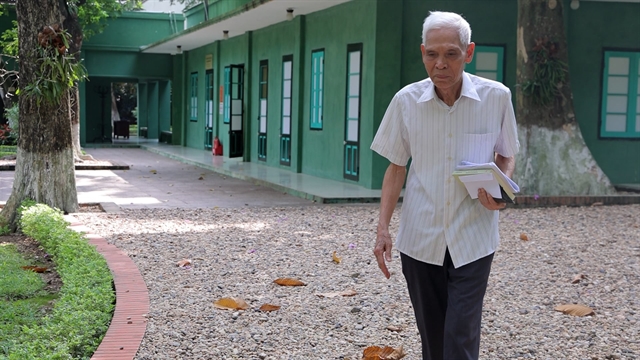
Carlijin Ubels, a visitor from the Netherlands said: "Hồ Chí Minh is very important to Việt Nam’s history. When I’m here, I should visit this place because it’s so important.
"It’s not just common for me, for my age," she said. "I know that he’s very important to Việt Nam and he brought the country together. He was living here and did not want to live in the palace. That’s very good."
Every day, the site welcomes a constant flow of people from all over the world.
They come here to understand more about Hồ Chí Minh, an important part of Vietnamese history as well as all of humanity. VNS
(*with additional reporting by Ngô Hà Hải Anh)


